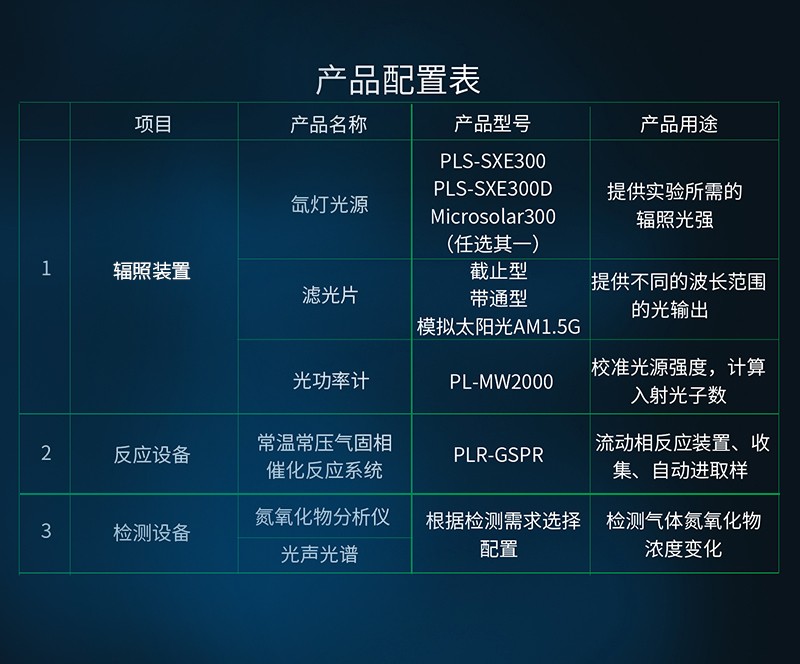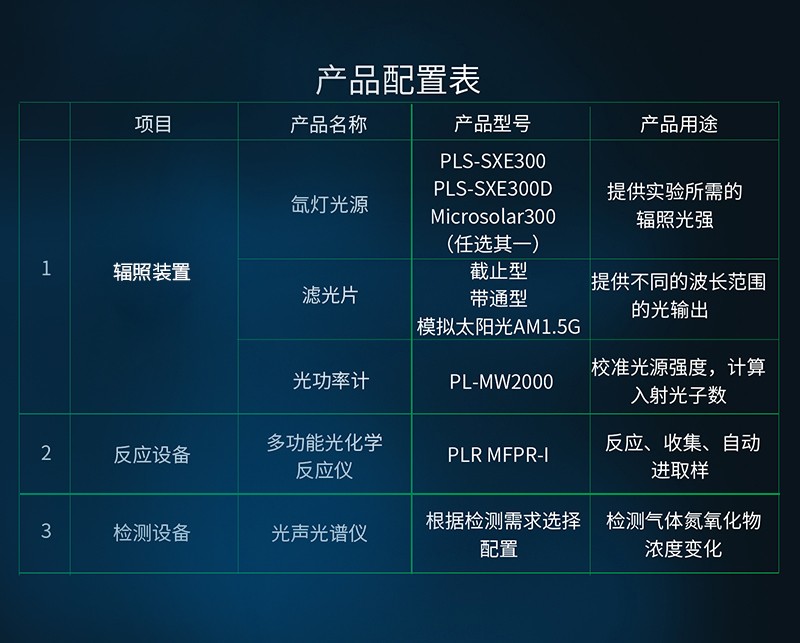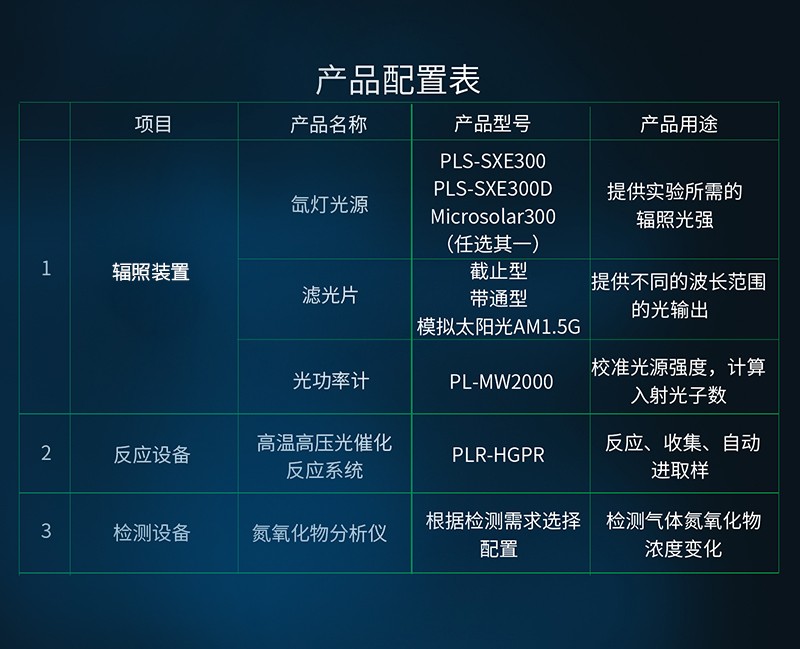Volatile Organic Compounds (VOCs), commonly referred to as VOCs, are typically classified into several major categories, including non-methane hydrocarbons (NMHCs), oxygenated organic compounds, halogenated hydrocarbons, nitrogen-containing organic compounds, and sulfur-containing organic compounds. VOCs participate in the formation of ozone and secondary aerosols in the atmospheric environment, exerting significant effects on regional atmospheric ozone pollution and PM2.5 pollution.
The degradation of VOCs through photocatalysis holds practical significance. With the catalytic action, degradation can be achieved through the exposure to sunlight, showcasing its low energy consumption and ease of promotion characteristics.
Configuration One: PLR-GSPR ambient pressure gas-solid photocatalytic reactor system + photoacoustic spectrometer / nitrogen oxide analyzer.
Configuration Two: Light source + multifunctional photochemical reaction instrument + photoacoustic spectrometer.
Configuration Three: Light source + high-temperature high-pressure photocatalytic reaction system + nitrogen oxide detector.

Advantages of the Solutions
(1)Advantage Analysis:
1.Flow Control: High-precision mass flow meters are used to control the flow rate, with an accuracy of ±1% F.S; repeatability of ±0.5% F.S; and the option to choose a wide range of flow rates from 0.01 NL/min to 10 NL/min, ensuring accurate dilution ratios. It also offers multiple flow control modes.
2.Real-time Monitoring of Gas State: The ambient pressure gas-phase photocatalytic reaction system monitors the gas state in real-time, including inlet and outlet pressure, temperature, humidity, etc., ensuring system accuracy and repeatability.
3.Precise Temperature Control: Temperature control range: -20~85℃; accuracy: ±1℃, resolution: 0.1℃.
4.Fully Automatic Controllable Valves: All valves can be controlled via a touchscreen, with efficient valve switching.
5.Large LED Display Screen: Visualizes the entire reaction process.
6.Multiple Feedback Control Schemes: Optimizes the experimental process for stability.
7.Various Reactor Options: Provides a variety of reactor choices for versatility, leveraging the strong design and development capabilities of Perfectlight.
8.Multiple Adjustable Light Sources: UV lamps with wavelengths of 254, 365, etc., with adjustable power between 10% and 100%.
9.Teflon Tubing for All Pipelines: Internal pipelines are corrosion-free and non-adsorptive.
10.Optimized System Structure: Compact and aesthetically pleasing design, measuring only 450×512×460 mm.
11.Key Participant in Standard Development: Plays a key role in formulating the group standard and national standard for "Testing Methods for Photocatalytic Air Purification Material Performance - Degradation of Nitrogen Oxides."


Advantages of the Solution
1.Can withstand certain temperatures and pressures for testing, withstanding up to 180°C and 0.9 MPa.
2.Compact size, occupying minimal laboratory space.
3.Large sampling ratio, high sensitivity. System volume is about 100 mL, with a quantifying loop of 0.2 mL.
4.Fully automated sampling, allowing unmanned operation for 24 hours, saving time.
5.Rich and diverse functions, capable of top and side illumination, suitable for both photochemical and photoelectrochemical experiments.
6.Can be expanded for electrocatalysis, photoelectrocatalysis, hydrogen production, and carbon dioxide reduction experiments.


Advantages of the Solution
1.Enables differential photocatalytic reactions under low gas flow rates and high temperature and pressure conditions.
2.The system can withstand pressures of up to 10 MPa.
3.The highest reaction temperature of the system can reach 380°C.
4.The system features a secondary stable flow valve and secondary stable pressure valve control, with separate control of three gas inlets.
5.The system is designed with an integrated safety protection box, equipped with a safety pressure relief valve, ensuring experimental safety.
